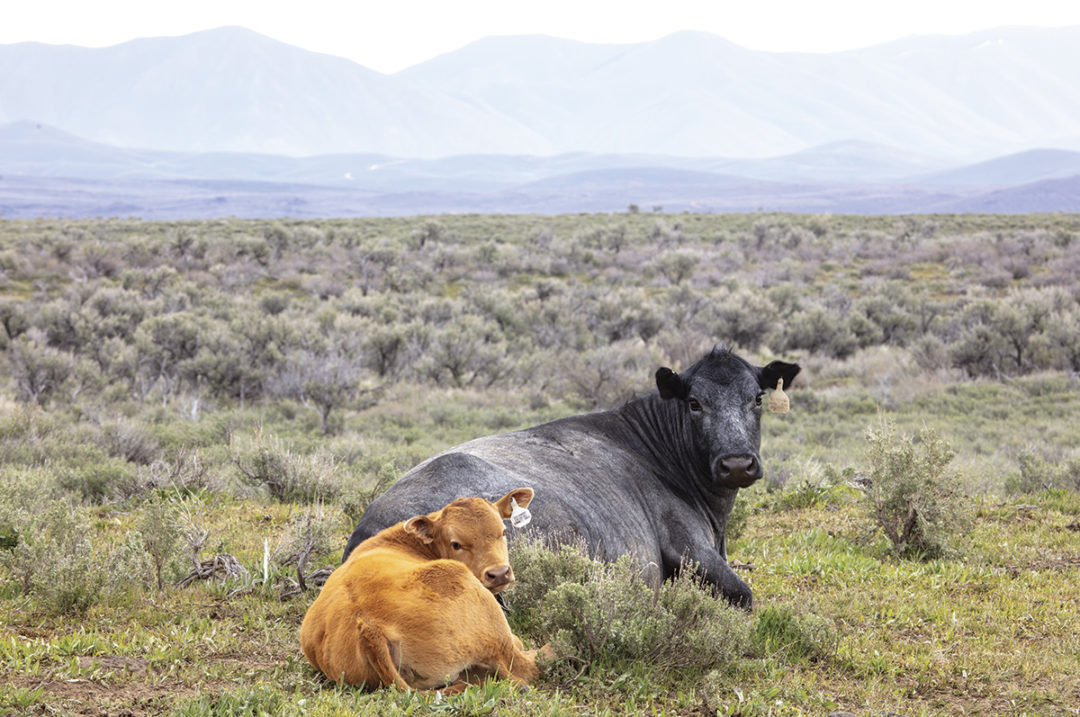“Genetic improvement” is a term with far-reaching implications, uniquely and individually defined by those in the beef industry.
PJ Budler, owner of Global Livestock Solutions and international business manager at Trans Ova Genetics, would rather North American producers didn’t use the term. He believes while genetics have changed through the years, these adaptations often haven’t met the definition of improvement.
Objectives driven by traits, data and tools
Budler suggests cattlemen’s main objectives are profit, and their intentions are influenced by goals related to their environment and resources. Decisions of calf sales directly from weaning, backgrounding or finishing to harvest are critical.
“Are we trying to hang banners on the wall, sell top-notch calves that outweigh the neighbor’s calves or create dollars per acre?” Budler asks. “No matter the goal, we must work within our environment. It’s too expensive to change it to fit the cow. It’s much easier to change the cow to fit the environment.”
Profit, resources and the environment steer decisions on genetic direction. Budler outlines four traits he deems the most important:
- Adaptability to the environment is the easiest way to measure or breed toward profit. Cattle not adapted aren’t able to express their genetics.
- Functional efficiency, or animals with the appropriate physiology and proportionate structure. Additionally, a working endocrine system is essential, allowing glandular functions to be correct and expressive in phenotypes.
- Fertility is a profit-driving trait. Studies have shown it’s twice as important as growth.
- Longevity is essential for profit in any industry. While some producers consider 7-year-old cows old, this isn’t the case when they’re functionally efficient.
“We often skip over the fundamentals and chase shiny objects, which land us in trouble,” Budler says. “If we truly want to be profitable, these four traits should be our focus.”
Once fundamentals are established, genetics and genomic tools including pedigrees, expected progeny differences (EPDs) and indexes are helpful in building a profitable cow.
Budler recommends producers use these tools to drive profit by measuring desired hormonal balance, body condition, masculinity, femininity, fat cover, scrotal circumference and early maturity. For those targeting growth and carcass quality, rib-eye area, marbling and yearling weight are measured and applied.
“We want optimum, not maximum,” he stresses. “Not an absolute of anything, but an optimum of something. Data and genomics help us get there. Once we’ve identified the optimum for our situation and applied the appropriate EPDs and genomics, we can use associated reproductive technologies to help achieve our objectives.”
Goals, A.I., crossbreeding and genomic testing
Cody Sankey, senior director of beef programs at Genex, believes goals need to establish where producers want to go and what they want to do. Selling calves direct from the dam, maintaining ownership or retaining replacements steer different actions for breeding program success.
“The use of artificial insemination [A.I.] is the fastest and most economical way to jump-start our genetic advancement, but we need to begin with the end in mind,” Sankey says. “Access to the most elite sires for targeted selection criteria will move the needle.”
It’s also important to remember that less is more with A.I. selection. While some use high numbers of bulls, fewer sires create more consistency in a calf crop.
Additionally, the combination of the environment, location and climate enter the selection criteria, as it’s critical that animals fit their environment.
Sankey says crossbreeding and adding heterosis is another method to improve a herd.
“It’s often said it’s the last free lunch. For the boost in reproductive efficiency and growth traits, adding heterosis through a solid crossbreeding system works.”
Beyond this, genomic testing allows producers to identify traits needed to push their operations in a desired and advanced direction.
Factoring management of resources
For Darrh Bullock, extension professor at the University of Kentucky, genetic improvement is a good term if it’s kept in context.
“It’s not necessarily maximization, but optimization,” he says. “It needs to fit and will be different for one farmer versus another depending on goals and marketing strategies.”
Bullock believes the main factors influencing genetic improvement hinge on how a pair of resources are managed.
He says the level of labor available during calving season is the first factor. This, along with the number of breeding heifers, will impact how much calving ease is needed. Shooting for trait maximum may not be necessary, as growth could be inadvertently sacrificed with this approach. Once established, maintaining the right level of calving ease level is key.
Nutritional quality and quantity, especially when retaining replacement heifers, becomes the second factor. Due to location, some operations have limited resources, while others have an excess of grass and forage that allows them to take advantage of higher growth and milk traits.
“High production [large mature size and heavy milking] matched with limited resources is a recipe for disaster,” Bullock says. “The females will have a hard time maintaining condition, which will likely result in reduced pregnancy rates. Replacement heifers and young cows must fit the management of their environment.”
Bullock says market timing goals also assist in meeting breeding objectives. Selling calves off the cow, backgrounding or finishing make a big difference in strategy.
“We’ve got to focus on the traits either putting money in our pockets or taking money out of them,” he stresses. “Yes, we should look out for the betterment of the entire industry to an extent, but if we go broke doing it, what does it help?”
Bullock adds that improving females or males aren’t mutually exclusive. Crossbreeding is essential, even if it’s as simple to implement in small groups as rotating sire breeding between the herd’s dominant makeup every four years.
“Crossbreeding provides the most benefit for commercial systems,” Bullock says. “It adds heterosis, or hybrid vigor, plus breed complementarity, matching the strength of one breed to complement or mask another’s weaknesses. We might not gain the best of every trait, but we’re trying to avoid deficits, reasons for someone to apply a discount.”
While genetic improvement might seem like an almost unattainable goal, unique and distinct factors help point commercial beef operations in the right direction.








